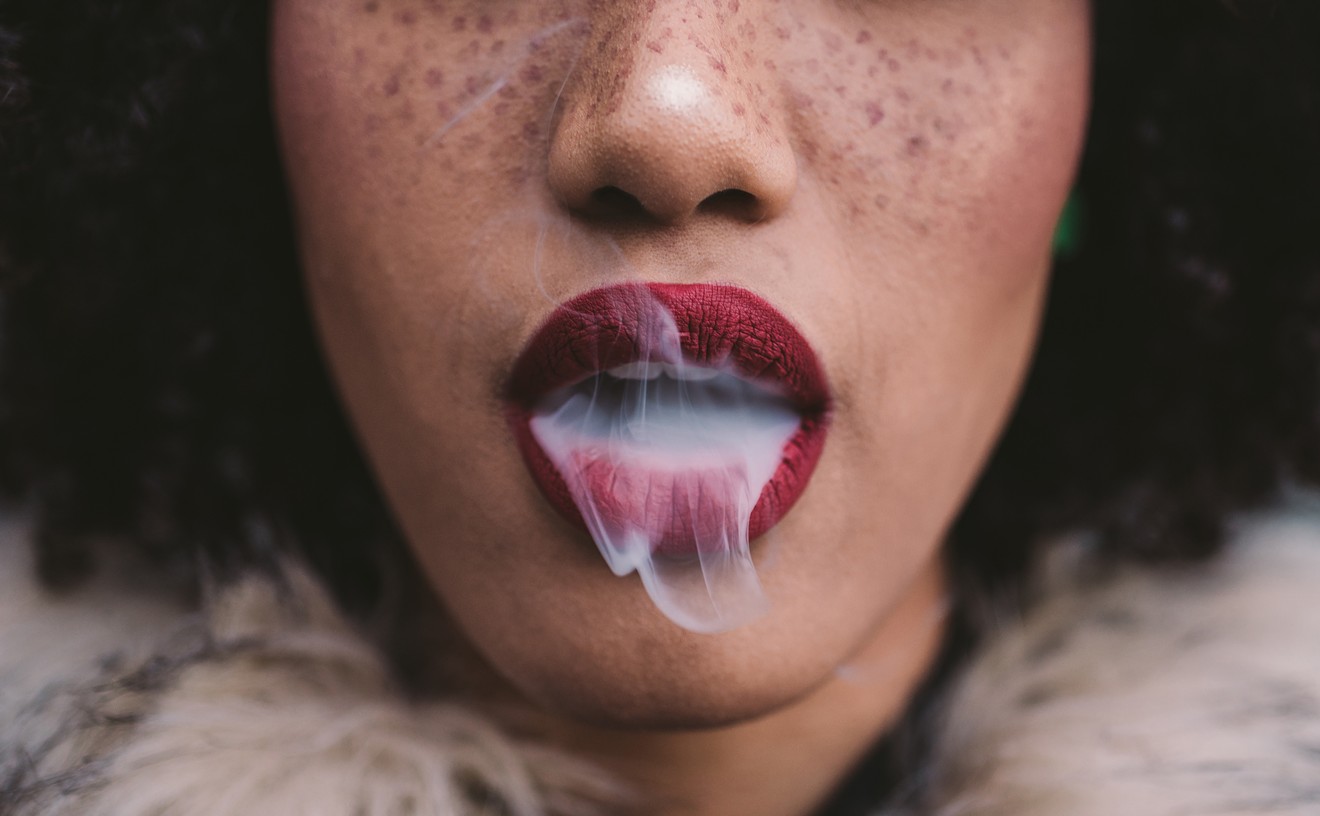There are always a few paintings of Elvis in the mix. He's one of the favorite subjects, along with bullfighters in their caps and red capes and La Virgen de Guadalupe with her roses. Black velvet is the perfect medium for Elvis. The larger-than-life portraits show his glory days in Las Vegas. In his white, rhinestoned jump suit, he's forever young, forever handsome, and somehow even forever trim. It's a perplexity how Elvis came to join the other two, but then black velvet is a mystery itself. Where did it come from, and how is it "art" when we ridicule it so much, condemning it as one of the lowest forms of kitsch. Maybe American families brought it across the Mexican border after vacation as a perfect complement to scorpion paperweights, piñatas, and those smiling donkey-shaped flowerpots. Whether it's art is a trickier question.
The Latino Cultural Center for Arts and Letters sought to find the answer and define the role of the paintings in our culture. So the group invited black velvet historian Jennifer Heath to judge an exhibit of local artists and their works on black velvet. 1999 Arte en Terciopelo Negro (Black Velvet Art) has 20 works with no romantic tributes to bullfighters or The King. "Ilusiones Brillantes de una Casita" features a figure with a pompadour, guitar, and wide-lapelled suit, but calling it Elvis might be a stretch (or just wishful thinking).
Arte en Terciopelo Negro does have a tribute to La Virgen de Guadalupe. Viola Delgado's "Untitled," a rose-printed wooden shrine, houses a painting of the Virgin Mary, her saintly glow more demure than usual. The use of velvet in the exhibit isn't always traditional or conspicuous. It peeks out from a screen in Dotty Zamora's op-art piece "Nemesis," and is a plush contrast to the metal pinwheel in Leticia Huerta's "Untitled." There are a few definite nods to kitsch, such as Benito Huerta's "Quieres Bailar?" -- a black velvet pillow with a painting of a woman with her nipples adorned with sequined tassels with dangling, golden trinkets. It has the same raunchy feel that attracted us to velvet at first.










